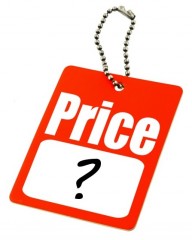The US government announced global “reciprocal tariffs”, which include a 24% tariff on Japan. The tariff, which is expected to take effect in one week on April 9th, would levy a tax of 24% on imports of all goods from Japan.
As the majority of Canon cameras and lenses are manufactured in Japan, if the tariff proceeds as planned, most Canon items will see an import levy of 24% when entering the USA. We expect that this would add 24% to the cost that Canon USA would pay when importing Canon cameras and lenses from Japan. Once Canon USA exhausts its current inventory of products, we predict that the higher cost would be passed on as a significant price increase to dealers (and eventually to end-consumers).
Note that shipping via a third-country does not avoid the tariff (as tariffs are based on country of origin, not shipment). For example, purchasing Canon cameras from stores in Canada would still be subject to the 24% tariff on Japan, as the “country of origin” is Japan (not Canada).
There is still significant uncertainty as to the magnitude of the actual tariffs and the implementation date, but the next few days are an excellent time to purchase cameras and lenses before what may be a lengthy period of price uncertainty.


PetaPixel has also written about this subject. https://petapixel.com/2025/04/02/trumps-plan-for-a-24-tariff-on-japan-likely-to-impact-camera-and-lens-prices/
Somehow I suspect Canon will counter the price hike, if it comes to that with frequent with frequent and generous intermittent discounts or refurbished store sales which allows them to save-off part of the warranty cost.
I don’t think the hobbyist market place can absorb a 25% price hike at this point and manufacturers would rather sell stuff at modest profit rather than idle some factories or stop offering new items that have been years in development.
Looks like I’ll just have to do without!
Or, these tariffs will lead to the revival of the US camera industry. I look forward to image-making with my Kodak Mirrorless ILC & Great Yellow lenses
I hate to be pessimistic but these things don’t usually pan out well for the common man.
A 25% hike at the border will not result in a 25% price hike for the customer, because the tariff is not on the minimum advertised price, but the value of the product when it enters the country as I understand it. I would expect 10-15% price hike, or no deals at all for a a while to compensate somewhat.
I can’t speak for Canon’s financial strategy specifically, but most publicly traded manufacturers try to make a certain percent profit margin, not a specific dollar amount of profit per item.
For example, if their desired margin is 20%, they import an item for $160 and sell for $200. If that item’s cost goes up to $176, the sale price would typically increase to $220 to preserve their percent margin.
The irony is that the dollar profit per item would actually increase as a result of input cost increases ($20 to $24 in this example). But of course their sales volume will be lower.
This is not correct. The tariff increases the landed price of the goods. Which is then subject to markup for profit which is often in the region of 50 percent to cover expenses and profit. The markup will be based to the landed price that includes the import duty. A 24 percent tariff could easily raise the retail price of a good by 50 percent. The importer may choose to soften that by absorbing losses in the short term but eventually the price will have to reflect the true landed cost or the company will go out of business. It’s just math.
I wonder if this will also affect used lenses from KEH or MBP for example.